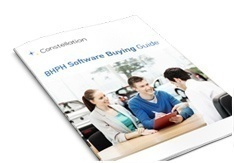It is a standard practice in the Dealer Controlled Financing business to charge the same interest rate to all customers at a particular dealership but the methods for determining that rate vary widely. There are 3 basic methods for deciding on a rate:
1. Charging the maximum allowed by state law
Every state has a law limiting the amount of interest a dealership is allowed to charge. This maximum rate is known as the state usury limit and some dealers choose to charge the maximum rate allowable. This rate will produce the highest amount of finance income but is the worst method from a marketing standpoint. As you might imagine, customers paying the highest rates allowed are less likely to refer other customers to the lot and will not be repeat customers if they are able to find financing at a lower rate in the future. High interest rates can also contribute to high delinquency because they force the length of the loan to be longer. The longer the contract, the more opportunity there is for events to occur that will affect the customer’s ability to pay and the more likely it becomes that mechanical issues will arise with the vehicle.
2. Selecting rate as a marketing tool
Many dealerships pick the rate they are going to charge as a way to market their dealership and set it apart from their competition. They may survey competitors in their market and choose a rate that is the lower than that of most or all of their competitors. Typically, this method will produce the lowest amount of finance income but assists a dealer in making more repeat and referral sales. Loan terms tend to be shorter and, therefore, this method has far less negative effect on delinquency.
3. The third method, and the one I want to spend the most time on today, is to actually calculate an interest rate in the same way that major finance companies calculate the buy rate they make available to dealers they do business with.
There are 3 major components to calculating a rate. They are:
A. Cost of Funds
If you are borrowing the money to operate your dealership, including having a line of credit, you should know what this number is. If you are using your own money to fund operations then your cost of funds is the rate that money could be earning you if it was invested in another way. This is sometimes known as the loss of liquidity factor. Be conservative when calculating this rate. It would be nice to assume you could be investing your money and earning 10 – 20% but reality is it would be more likely you would be earning an average Treasury bill or CD rate. The current best rate for a 5-year jumbo ($100,000 or more) CD is 2.29% and the figure you use should be similar to this if you are not borrowing funds.
B. Cost of Losses
Again, this should be a number you track regularly but let’s take a look at how to calculate it. First, take the gross amount charged off during the year. Subtract the amount recovered from that number to arrive at your net charge off amount. Divide that number by the amount of your total accounts receivable (since some charge-offs come from previous sales, not just what you sold during the period) to arrive at your net charge-offs expressed as a percentage of the A/R. This is the amount of your finance interest rate that is designed to cover your losses. In dealers we consult with I have seen this figure as low as 6% and as high as 30% with most being at 12% or lower.
C. Cost of Servicing Loan
This part of the interest rate is designed to recoup your expenses for creating and maintaining the customer’s loan account. It includes such things as staff expenses, regular collection expenses, and other costs of doing business. If you have a Related Finance Company, most of the portion of expenses allocated to the RFC will fall into this category. If you do not have an RFC, you must assign a portion of all expenses to collections to establish this category. For example, if you have 2 employees who only do collections but the manager controls both sales and collections, you would assign half the manager’s salary plus the full salary for the 2 collectors to this category. 50% of operational expenses such as rent and utilities are typically assigned to this category. Once you have arrived at an annual total expense figure, that number is divided by the total amount financed to arrive at the percentage that needs to be included in your interest rate to cover these expenses. For a larger volume dealer selling more expensive cars, this number typically averages around 5% while smaller volume dealers selling less expensive vehicles may see figures around 10% – 12%.
Simply add the percentages you came up with in each of the 3 steps above to determine the interest rate you need to be charging to cover all of the above areas. This number will average between 12% and 20% depending on loss experience and expense structure. If your figure is much above this range, you have issues that need to be addressed.
The choice of the interest rate you charge your customers is yours and yours alone, within certain legal constraints, of course. Even if you calculate the interest rate you need to charge to cover all the costs, losses and expenses outlined above, you can choose to charge a lower or higher rate. Many dealers choose to charge a lower rate than the one actual needed as a marketing tool or for competitive reasons. By doing the above calculations, however, you will know what is necessary to cover those costs and the process will give you some valuable insights into the operation of your dealership.
As published in Used Car Dealer magazine



